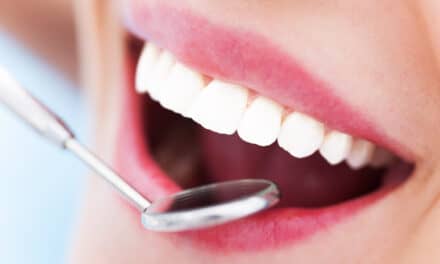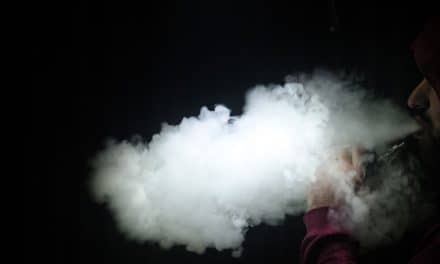The ADA Health Policy Institute released the findings of its new report which took a close look at how the pandemic impacted net income and hours worked among general practitioners and specialists.
Income was down among general practitioners and specialists in 2020, with female dentists taking the largest hit during the pandemic, according to a new report released by the American Dental Association Health Policy Institute (ADA HPI). While net income was down 17.9% among general practitioners as a hole in 2020 compared to 2019, it was down 26.6% for female general practitioners. Specialists a saw smaller decrease in net income, with a 6.9% average decline.
The report, titled “How Did the COVID-19 Pandemic Affect Dentist Earnings?”, is the first look at how the COVID-19 pandemic and resulting shutdowns affected dentists’ earnings and hours worked in 2020. In a webinar on September 2, Marko Vujicic, PhD, chief economist and vice president of the ADA Health Policy Institute, also presented the group’s latest data on dentistry’s COVID-19 recovery.
COVID Recovery Continues; Staffing the Biggest Hurdle
In terms of the recovery, the latest data (which is now being collected monthly instead of every 2 weeks) shows patient volume is at a new high, reaching 89% of pre-COVID levels in data reported the week of August 16.
When it comes to recruitment and hiring, owner dentists reported that they have increased their recruitment efforts for all dental team members, with about four in 10 seeking dental assistants and about one-third looking to hire dental hygienists. At the same time, they are reporting challenges. Ninety percent of dentists surveyed reported that recruiting dental hygienists has been “extremely” or “very” challenging, while 85% reported the same level of challenges when recruiting dental assistants. These numbers have increased, albeit gradually, since October 2020.
In his presentation Vujicic reported that the latest data backs up what ADA HPI has heard anecdotally. He added that in working with the American Dental Hygienists Association, they know about 5% of dental hygienists who were working before the pandemic have not returned to work. The bulk of these hygienists are later career stage hygienists. About two-thirds of these hygienists report they are voluntarily not returning to work. Among their reasons for not returning are concerns about the pandemic generally, concerns about the safety of their workplace, and childcare issues, although the percentage reporting this last concern has declined in recent weeks.
The data, says Vujicic, indicates that the industry might be seeing an early retirement bump due to COVID-19 among dental hygienists that is permanent. This all plays into the hiring challenges currently facing dental practices. He added that they are not seeing a retirement bump due to the pandemic among dentists in the older age group.
As part of the ADA HPI’s latest survey on COVID-19 recovery, respondents reported that staffing shortages (40.1%) are the most limiting factor in their ability to see more patients, followed by COVID safety protocols (30.6%) and low patient demand (27.9%).
Female Dentists Take Biggest Income Hit in 2020
When it comes to dentists, the ADA’s Dentist Earning report, further confirms the greater impact the pandemic has had on female professionals. Not only did female dentists see the largest net income decline in 2020, they also saw their hours worked decline at higher rate than their male colleagues.
Hours worked are a key driver of income data, and in 2020, hours worked declined by 16.6% for general practitioners overall and 11.7% for specialists. When broken down by gender, male dentists reported a 14.5% decrease in hours worked during 2020, while female dentists reported a 22.1% drop in hours worked. Broken down by age, dentists age 65+ saw a decrease of 21%; age 40-64 a 16.6% drop; and the under 40 contingent saw a 13.2% drop. Vujicic pointed out that while there is no data showing an increase in retirement among older dentists, they are clearly working less.
Diving deeper into the hours worked question, in 2020 both general practitioners and specialists were open for “emergencies only” for about 7 weeks. During the spring shutdown, general practitioners reported working 11.2 hours on average per week, while specialists reported 12 hours average per week worked.
The survey then asked respondents to report their average number of hours worked for the non-closure weeks. General practitioners reported that they were open for all or most procedures for 39.4 weeks in 2020, and averaged 33.2 work hours per week. Specialists reported that they were fully open for 40.6 weeks in 2020 and worked an average of 33.7 hours per week. The average hours worked per week in 2019 were 36, according to Vujicic.
Majority of Dentists Took Advantage of COVID Relief Funds
The ADA HPI Dentist Earnings report also asked respondents whether they had received COVID-19 related relief funds in 2020. Dentists reported receiving an average of $95,000 per practice in COVID-19 related relief funds, which includes both PPP and IDLE loans. According to the report, this amount was separate from billings collected but equivalent to 15% of billings collected from dental care provision.
The data showed that 86.6% of general practitioners and 86.4% of specialists reported tapping into these relief funds. Specialists received on average $109,386 per practice.





